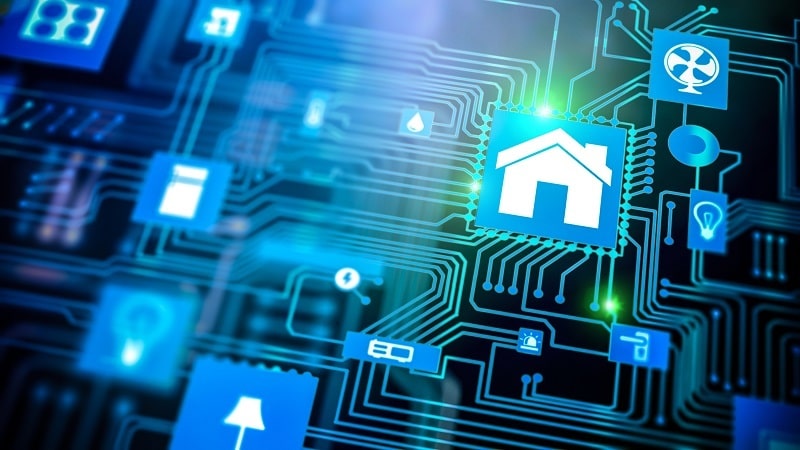The changing role of AV maintenance
Audiovisual (AV) equipment used to be precisely that—devices with a sound and video component built into them. That has changed in the modern world, though, with most devices now coming equipped with IT architecture as well. This means that installing, servicing, maintaining and repairing AV equipment requires IT know-how, as well which can present challenges to the industry.
Industry experts agree that the AV technology and IT solutions have converged, with the two elements coming together to complete home setups. Which is why it is critical for the modern-day installer to be able to get AV devices to communicate properly with IT architecture. This includes smart TVs and IP connections to WiFi, and the like. Additionally, several companies—like Crestron and Extron-—are developing integral smart, AI-driven control platforms, capable of running through the home network and controlling the entire AV operation.
Australian installers have a chance to lead the world in adopting new practices. Custom Electronic Design & Installation Association (CEDIA) Director of Technical Curriculum David Meyer says Australia has a strong reputation for adopting technology early. Ultimately, domestic AV installers can use this thirst for new innovation to become world leaders in merging installations with IT setups.
“We’re consistently in the top 10 for technology uptake and innovation, and our demands for home network usage and content access are comparable to the likes of the US (per capita),” he says.
“There’s a plethora of great products available through many dedicated and knowledgeable distributors, so there’s really nothing holding us back from showing how it can and should be done.”
The merging of AV and IT
Clients have greater expectations when it comes to AV in the modern world, which presents installers and integrators opportunities for further revenue streams.
The Internet of Things is seeing more and more household devices now tap into the online space, with 75.4 billion devices expected to be connected by 2025. This is likely to have a huge impact on the AV industry, too, with centralised data centres able to anticipate maintenance and prevent downtime.
Meyer says the convergence of AV and IT is “well and truly here”, noting it’s important for installers to recognise the rise of IoT devices and central IT hubs and skill up accordingly.
“The network is the new heart of the system and as such, designing and integrating networks is an essential core competency for technology integrators,” he says.
“Not only are we connecting more devices in the home, but now we’re delivering more and more video content through networks.
“Some of it comes into the home from the Internet—for example, Netflix—some from within the home and distributed around the home with AV-over-IP evolving rapidly.
“Cisco’s Visual Networking Index (2016) predicts that video will account for 82 percent of all IP traffic by 2020. That’s quite believable, considering it was already at 74 per cent in 2016.”
With that much video being fed through IT systems into AV products, it’s crucial that the two solutions are able to communicate properly with each other seamlessly.
Integrated software solutions to replace hardware
Wainhouse Research provides analytics and studies in the AV industry. Senior analyst Saar Litman says the migration from hardware to software is likely to be the future of the field.
“The shift from dedicated hardware to centrally deployed software solutions for video, audio, and control systems makes perfect sense,” he says.
In early 2017, U.S. AV company QSC Audio Products unveiled a piece of hardware that could lay the platform for how all AV installations connect with IT solutions in the future.
Since then, QSC rolled out Q-SYS software into a server which operates as the hub for all AV operations in the one home. It is intuitive, easy to use and is built into the AV equipment itself, in order to create a centralised data centre.
The reason this is such a breakthrough is because it potentially eliminates the need for AV installers to try and make AV equipment talk to IT equipment. Instead, the software is built into the AV technology, allowing for an all-in-one centre of operations.
These home IT revolutions are just the beginning, with technology like the Internet of Things set to make houses smarter than ever before. And the changes already being made in the AV industry highlight the need for installers and integrators to learn about combining the technologies in the new world.
Learning opportunities for AV installers and integrators
Australia’s premier annual AV trade show Integrate presents an invaluable opportunity for those in the industry to collaborate and learn about the next waves of innovation.
Integrate brings the industry’s top AV and IT manufacturers, distributors and dealers together for exhibitions, learning from keynote speakers, interactive innovation displays and the chance to network with over 6000 others from the industry in attendance.
The 2018 Integrate trade show will be held at ICC Sydney in Darling Harbour from August 22-24.
About the Author: Josh Alston
Josh Alston is a journalist, editor and copywriter who has worked for several daily, community and regional newspapers across the Queensland seaboard for 12 years. In this time he has covered news, sport and community issues and has been published in major daily newspapers and nationally online for breaking news. Josh presently works as a freelance reporter writing for clients including the Victorian Government, AGL Energy and a host of others.
Twitter: @alstonjoshua
-
Stay up to date with the latest news, industry insights and Integrate updates.
- Subscribe

